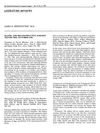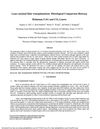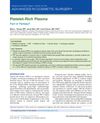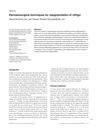International Society of Hair Restoration Surgery
July 1998
in “
Dermatologic Surgery
”
UltraPulse carbon dioxide laser hair transplant surgery grafted hair direction corn row appearance micrograft megasessions follicular clump hair transplantation microstar incision hair microautotransplant Rapid Fire Hair Implanter Nordström suture Erbium:YAG laser M-shaped alopecia reduction natural bundle grafts tissue expansion cicatricial alopecia crushed follicular units dehydration hair follicles pin cup Banuchi Graft Dispenser forceps design UltraPulse CO2 laser hair transplant graft direction corn row look megagrafts follicular unit hair transplant micro incision hair auto-transplant Rapid Fire Implanter Nordström stitch Erbium laser M-shaped reduction bundle grafts tissue expander scar alopecia crushed follicles dry follicles hair roots pin holder Banuchi Dispenser crush-proof forceps

TLDR Various techniques and tools for hair restoration were presented in 1998, including a mathematical model for donor area, use of lasers in surgery, methods for controlling grafted hair direction, and ways to increase graft yield. Satisfaction rates were around 39%, and studies showed trauma and dehydration can damage hair follicles.
In 1998, the International Society of Hair Restoration Surgery presented various studies and techniques related to hair restoration. Jiménez FJ and Ruifernández JM proposed a mathematical model for optimal donor area geometry. Lowe NJ, Lask G, and Chizhevsky V reported successful use of the UltraPulse carbon dioxide laser in hair transplant surgery. Wong suggested a method for controlling grafted hair direction, and Vogel JE presented a technique to correct the "corn row" appearance of hair transplants. Shapiro R discussed overcoming low graft yield and density in micrograft megasessions, while Seager DJ highlighted the importance of the follicular clump in hair transplantation. Rousso DE and Adler S found that 39% of patients reported complete satisfaction in hair transplantation procedures. Rosati and D'Emilio R introduced the microstar incision for hair microautotransplant. Other advancements included the Rapid Fire Hair Implanter, the "Nordström suture", the Erbium:YAG laser, the M-shaped alopecia reduction, and the use of natural bundle grafts. Kabaker SS discussed the role of tissue expansion in hair restoration, particularly for cicatricial alopecia. Greco F's study showed a 55% "kill-rate" of crushed follicular units, indicating a correlation between trauma and no growth. Gandelman M and Abrahamsohn PA found that dehydration was damaging to hair follicles. Other techniques and tools introduced included the "pin cup", the Banuchi Graft Dispenser, and a new forceps design to prevent crush injury to grafts.




